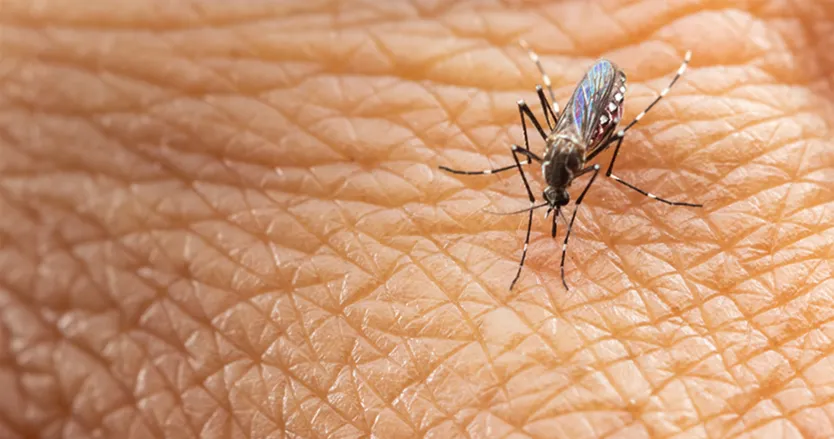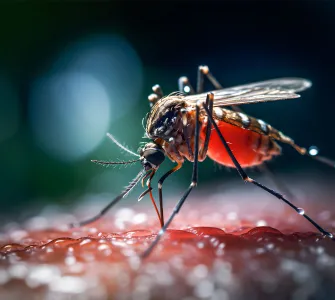Mosquitoes and humans: Shared blood and water through the ages


Too close for comfort
Traces of our struggle with mosquitoes can be found throughout the millennia and across many continents. Evidence of their ability to spread disease to humans can be found in Chinese records dating back to 2700 BC, on clay tablets in Western Asia from 2000 BC, and etched onto Egyptian papyrus from 1570 BC.1,2 Currently, mosquitoes and other blood-sucking insects claim over 700,000 lives annually worldwide, acting as vectors for deadly diseases like malaria, dengue, and yellow fever.3,4 Some historians have even suggested that, in the entire history of the human race, mosquitoes may be responsible for killing around half the people who have ever lived.5,6
Disputed waters
So, what has kept us together all this time? The answer lies in our water supplies and our blood. Water is a shared necessity for both humans and mosquitoes. The insects, whose name comes from the Spanish for ‘little flies’, rely on standing water to hatch and grow their offspring. Throughout history, as humans collected and stored water for various needs, a strange alliance formed. Recent findings from Princeton University reveal that mosquitoes in regions with prolonged dry seasons have adapted to seek out humans more effectively, recognizing that wherever humans reside, water is close at hand.7,8
The human-mosquito connection deepened over time, with mosquitoes evolving to exploit another vital resource—human blood. Female mosquitoes require the nutrients, primarily vitamins, found in blood to produce their eggs.9
How can I help protect myself against mosquitoes?
If you want to know what you can do to combat mosquitoes and the threat of diseases such as dengue, you can read this article: Prevent dengue spreading through your home and community
References
Herre, M. et al. Cell. 2022 ;195(17):3104-3123. Available at: https://www.cell.com/cell/fulltext/S0092-8674(22)00927-8. Accessed November 2023.
Cox FEG. Parasites & Vectors. 2010;3(5):1-9. Available at: https://parasitesandvectors.biomedcentral.com/articles/10.1186/1756-3305-3-5. Accessed November 2023.
World Health Organization. Vector-borne diseases. Available at: https://www.who.int/news-room/fact-sheets/detail/vector-borne-diseases. Accessed November 2023.
Nyaruaba, R. et al. Pathog Glob Health. 2019;113(5):209-228. Available at: https://pubmed.ncbi.nlm.nih.gov/31664886/. Accessed November 2023.
New Scientist. Mosquitoes may have killed half the people who ever lived. Available at: https://www.newscientist.com/article/mg24332420-500-mosquitoes-may-have-killed-half-the-people-who-ever-lived/. Accessed November 2023.
Winegard, TC. The mosquito: a human history of our deadliest predator. Published 2019. Available at: https://books.google.co.uk/books?id=ngqNDwAAQBAJ&pg=PA1&source=gbs_toc_r&cad=3#v=onepage&q&f=false. Accessed November 2023.
Rose, NH. et al. Current Biology. 2020;30:3570–3579. Available at: https://www.cell.com/current-biology/fulltext/S0960-9822(20)30978-7. Accessed November 2023.
New Scientist. Mosquitoes evolved to suck human blood when they couldn’t find water. Available at: https://www.newscientist.com/article/2249764-mosquitoes-evolved-to-suck-human-blood-when-they-couldnt-find-water/. Accessed November 2023.
Department of Molecular Virology and Microbiology. Mosquito-Borne Diseases. Available at: https://www.bcm.edu/departments/molecular-virology-and-microbiology/emerging-infections-and-biodefense/mosquitoes. Accessed November 2023.


























